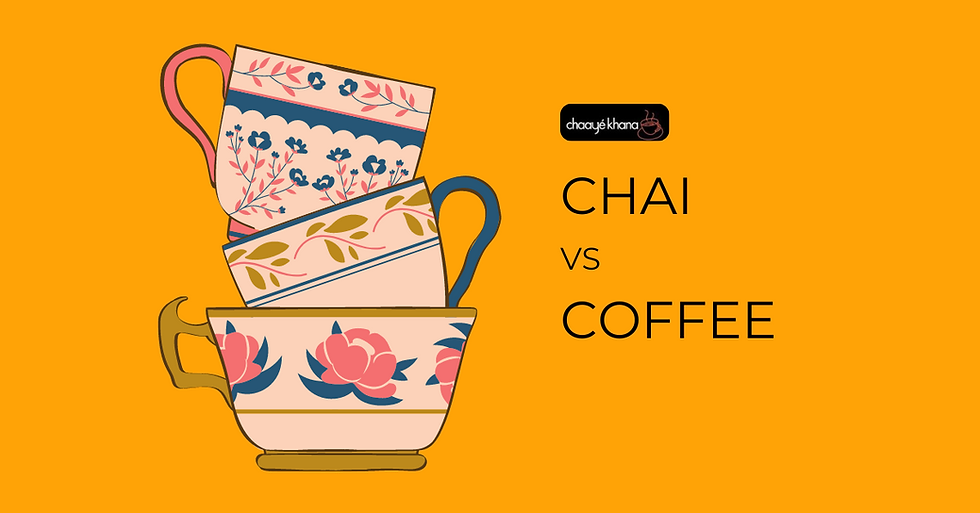Tea Leaf Reading: An Ancient Practice for Modern Times
- Hassan Mannan
- Jun 16, 2023
- 2 min read

"As you drink your tea, keep an eye on the leaves that collect at the bottom of your cup. Are they forming a heart shape? Congratulations, you're in for a wild and steamy love affair! Is there a ring present? Looks like you'll be tying the knot in no time. But beware the dreaded cross symbol - it could mean you're in for a bumpy ride."
Are you tired of boring old tarot card readings and crystal ball gazing? Are you ready to shake things up and have a little fun with your divination? Look no further than the exciting and hilarious world of tea leaf reading!
Fortune telling through the reading of tea leaves, also known as tasseography, is an ancient practice that has been used for centuries to divine the future and seek guidance. The art of tasseography involves interpreting the patterns and symbols formed by the wet tea leaves at the bottom of a cup after a hot beverage has been consumed.
The origins of tasseography can be traced back to ancient China, where it was believed that the gods communicated through the patterns formed by tea leaves. The practice eventually spread to Europe, where it became a popular form of divination during the Victorian era. It was during this time that tasseography became associated with the idea of "reading the leaves" as a way to predict the future and seek guidance, with books and guides featuring symbolic interpretations of the different shapes and patterns that could be found in the tea leaves.
To perform a tea leaf reading, the fortune teller begins by brewing a cup of loose leaf tea and allowing it to steep for a few minutes. After the tea has been consumed, the fortune teller turns the cup upside down and allows the remaining tea leaves to form a pattern at the bottom. The fortune teller then interprets the patterns and symbols formed by the tea leaves, taking into account the position and orientation of the leaves in the cup. Different symbols and patterns are said to have different meanings, such as a heart symbolizing love, a ring symbolizing marriage, or a cross symbolizing change or challenge.
The art of tasseography is highly subjective, as it relies on the intuition and interpretation skills of the fortune teller. Some people believe that tasseography can provide insight into the future and help individuals make important decisions, while others view it as a form of entertainment or a way to connect with the spiritual world. Despite its controversial nature, tasseography remains a popular form of divination and continues to attract practitioners and enthusiasts around the world. Whether it is viewed as a serious method of fortune telling or simply a fun activity, the art of reading tea leaves remains a fascinating and enduring part of human history.



If you're curious about tarot and looking for a way to explore its insights without any commitment, trying some Free Tarot Readings Online can be a gentle introduction. Many websites offer automated readings where you can draw virtual cards and receive interpretations for different spreads, like a daily card or a simple three-card pull for past-present-future. While it's different from a live reading, it can help you get familiar with card meanings and how tarot can prompt self-reflection. It’s a nice way to dip your toes into the world of tarot at your own pace.
I recently visited Chaye Khana in DHA Bahawalpur, and unfortunately, my experience was far from pleasant. To start, we were overcharged for several items, and when we pointed this out, the waiter not only raised his voice but also gave us an unacceptable excuse. He claimed that due to a shortage of crockery, they served lassi in smaller glasses but still charged us the full price. This was a clear attempt to justify their mistake, but it didn’t sit right with us.
Additionally, when we ordered French toasts, we were shocked to find that they were served plain—no sugar, no sweetness whatsoever. French toast is typically a sweet dish, and this left us wondering how anyone could enjoy such a…
I recently visited your esteemed establishment in B17, Islamabad, with the intention of enjoying a cup of tea. However, I was disheartened to discover that you do not offer the option of serving tea with skimmed milk—a necessity due to a medical condition and dietary restrictions prescribed by my doctor.